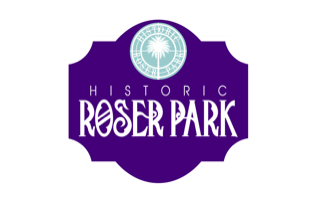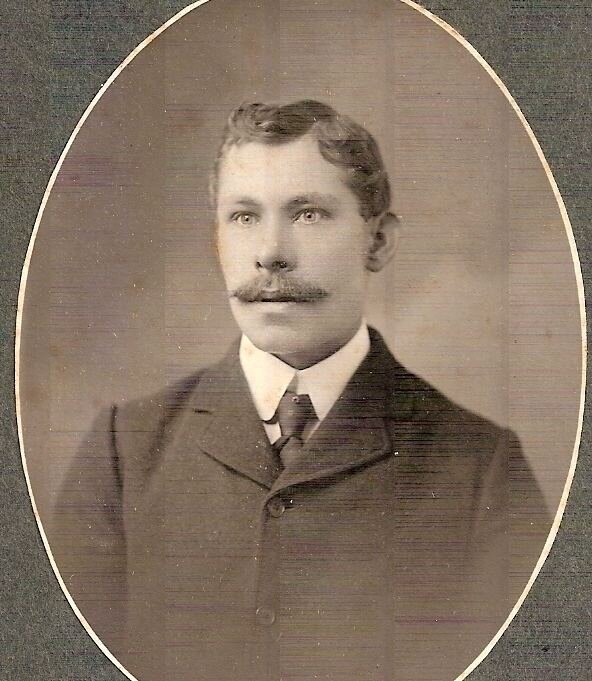
Historic Roser Park
Our History
How it started
Like downtown St Petersburg, the Historic Roser Park neighborhood is experiencing a renaissance. Its historic character, hilly tree-lined drives, and friendly community spirit alone make it a great place to live, but Roser Park also features close proximity to commercial centers, municipal facilities, hospitals, colleges, arts and entertainment, sporting arenas, boating, beaches, and recreation, and regional and international airports. If you haven't had the opportunity to drive through Roser Park lately, it's definitely worth the trip to see for yourself how a carefully focused reinvestment can rapidly transform a neighborhood. Like many others new to Roser Park, you may end up saying, “I’ve never seen a neighborhood like it – at least not in Florida."
The 270-acre district is bounded by 4th Street and Dr. Martin Luther King Jr. Street (9th St. S.). to the east and west, and by Booker Creek and Ingleside Avenue (12th Avenue South) to the north and south. The first residential subdivision to be established outside of the downtown St. Petersburg business district, Roser Park was an early "streetcar suburb" conveniently located along the downtown trolley line and is listed on the National Register for its significance in community planning and development, architecture, and landscape architecture. Located in the Midtown Redevelopment Area, Roser Park also encompasses historic Greenwood Cemetery and one of St Petersburg's most storied creeks.
The neighborhood is home to a wide variety of architectural styles and types, including Frame Vernacular, Bungalow, Prairie, Foursquare, Craftsman, Mediterranean Revival, Colonial Revival, Neoclassical, and Tudor Revival. Approximately 173 structures are located within the district, only about 15 of which are noncontributing. Roser Park is also an excellent local example of development inspired by the City Beautiful Movement, which advocated the creation of livable cities through the inclusion of public parks and designed landscape spaces into the urban and suburban environment. The sensitive site design and attention to landscaping by early developers created the distinctive setting that enhances the neighborhood's natural character and beauty to this day.
The district retains many of its other original design features, including rusticated block retaining walls, brick streets, original hexagon sidewalk pavers, and granite curbstones. Roser Park's neighborhood association, HRPNA, is working hard to restore other original and period features, such as vintage street lighting and signage.
A Fig Newton of his imagination?
Roser Park was originally developed by Charles Martin Roser, an Ohioan who foresaw the opportunities of the Florida land boom of the early twentieth century. The prospect of a leisurely life on the balmy Pinellas Peninsula was drawing a steady stream of emigrants from the cold north, and to accommodate them Roser purchased land on the outskirts of another developer's work. The location he selected along Booker Creek was picturesque, geographically and ecologically dynamic, and truly unique. Accordingly, he created a neighborhood that was as appealing and diverse as its environment, offering the widest possible array of architectural styles.
Roser was born in 1864 in Elyria, Ohio. It is believed that he earned his fame and fortune by developing the recipe or baking process for the famous Fig Newton cookie, and selling it to the National Biscuit Company (Nabisco). Roser initially had an interest in a cheese business in Wellington, OH, and by 1899, was operating a candy and cookie factory in Kenton, OH that was turning out fig cookies. Legend has it that Roser sold Nabisco the rights to his fig cookies for 1 million dollars, the modern equivalent of about 19 million. Nabisco has maintained for some time that the Fig Newton was invented in 1891 by Philadelphia inventor James Henry Mitchell. Mitchell is said to have invented the duplex dough-sheeting machines and funnels that made the jam-filled cookies possible.
According to a Nabisco marketing director, Nabisco purchased Mitchell's fig cookie, his machines, and his Kennedy Biscuit Works outside Newton, MA in 1898, the same year that Nabisco itself was formed by the merger of the New York Biscuit Company and the American Biscuit & Manufacturing Company in Chicago. Nabisco observed further that although they are familiar with several stories claiming credit for the cookie, they have no record of Charles Roser.
More recently, however, Nabisco has seemed more willing to take other possible contributions to the confectionary invention into account. After all, the company was formed in 1898 through the merger of 114 bakeries whose 400 ovens combined to consume 2 million barrels of flour a year, yielding 360 million pounds of crackers annually. The New York Times reported that "all the biscuit and cracker companies between Salt Lake City on the west, Portland, Maine, on the east, and St. Louis and New Orleans in the south, will tomorrow morning be under one management." Individual credit for specific innovations in any one of those given markets or bakeries would be difficult to establish with any degree of accuracy after all this time. Some sources say that Roser sold his recipe to the Kennedy Biscuit Works before it was swept up by the Nabisco merger.
Charles Martin Roser builds his vision
Whether Charles Roser actually invented the Fig Newton, or whether his fortune was merely the result of the giant industry consolidation of 1898, it is clear that he came to St. Petersburg in 1910 with his wife Ruth and quickly established himself as one of the city's foremost developers, promoters and philanthropists. Roser's first major projects included the construction of the Palm and Poinsettia hotels and the establishment of Mound Park Hospital's home for nurses and Mercy Hospital for black residents. He also donated land for schools, including 5 acres in 1913 for the Roser Park School. Roser also purchased property at 5th St. and Central Ave, building retail stores and a cafeteria.
Roser began work on the Roser Park subdivision in 1911, purchasing C.D. Hammond's 10-acre citrus groves south of the city for $12,000. He bought an additional 5 acres from J.P. Lynch. Apparently, people didn't think he could make a go of it, remarking at the time that "no one would drop money into that mud hole." But in 1913, Roser purchased more land from Alex Linn, increasing his holdings around Sixth Street and Seventh Avenue S. The Evening Independent finally took notice, reporting that "the first subdivision to be opened outside the city, with all brick streets and every other city convenience, is the new suburb by C.M. Roser — Roser Park. Georgia Engineering is laying brick. The 60 lots will have 12 blocks of brick streets and sidewalks." Brick was a rare and expensive material in those days, but Roser insisted upon its abundant use.
The subdivision soon expanded to 80 homes between Sixth and Eighth streets, south of Seventh Avenue S, Roser's own mansion at Seventh Ave and Seventh Street S. One guest of the home remembered it being "full of art treasures," and said of Roser that he was "quiet, small, serious, and very much the businessman."
Roser purchased the Edgewater Inn in 1913, investing $20,000 in renovations, and spent at least another $30,000 for 5 more acres along Ninth and Sixth Streets S, excluding landscaping and improvements. Much of this land, including Booker Creek, he gifted to the city on February 27, 1918, the official birthday of Roser Park.
According to newspapers, "Roser was constantly spending money on the park, streets, and nurses home (Roser Hall) and never accepted any money from the city." In 1923, he built the Royal Palm Hotel on Fifth Street S, but the lease fell apart during the depression of the 1930s.
After several weeks in Mound Park Hospital following a few years of illness, Charles Roser died on April 12, 1937, at age 73.
A neighborhood with a future
714 Roser Park Drive South
To this day, Charles Martin Roser's vision remains essentially intact. The neighborhood he created is a veritable living museum of post-Victorian architectural style that continues to draw the interest and attention of preservationists and investors. Perhaps it is no coincidence that the selfsame spirit that led to its creation is essentially the same vision that has inspired its rejuvenation. Roser Park remains a place where opportunity abounds.
The residents work with the City of St Petersburg to document and manage this 'vision' using a Neighborhood Plan. This Plan was revised in 2014 and some of its mission is being implemented soon. Here is the full document: Roser Park Neighborhood Plan 2014
Sources: FSU Photo Archives; "Cookiemaker, vegetarian put Roser Park on the map" By SCOTT TAYLOR HARTZELL © St. Petersburg Times, published November 27, 2002; "Cooking up a Legend," by MARY KATE FRANK, Staff Writer










